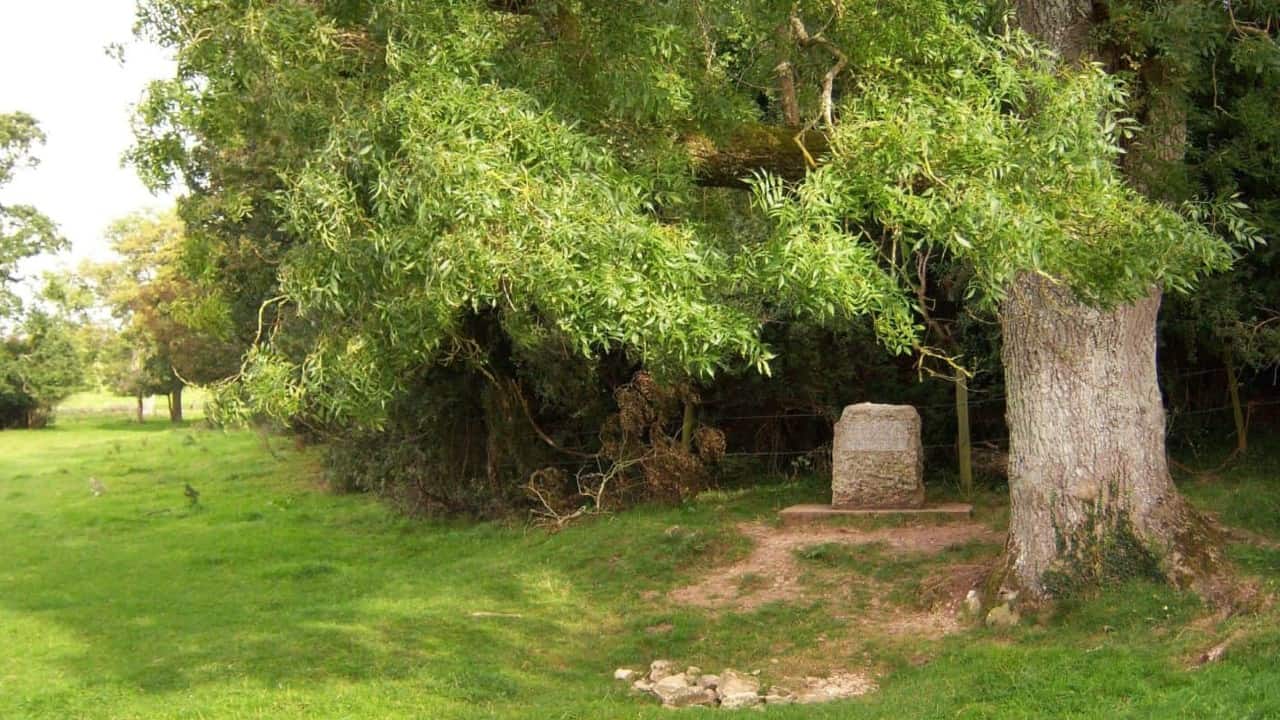The Thames Path walk is a fantastic river walk, following the iconic River Thames all the way from its Cotswolds source through to the Thames Barrier in central London. At 296km, it’s a lengthy challenge, but its flat profile and easy-to-follow route make for a very doable walk if you have enough time and enough inclination.
For the vast majority of the Thames Path walk, the trail follows the route of the River Thames. Over the course of the route, the River Thames transforms from a field in which you may well see no water at all to a huge flowing river, which rips England’s iconic capital in half.
There’s plenty of diversity along the walk – some stretches are rural and remote, with nothing in view but sheep, crops, and meadows. While other sections take in iconic sights such as Windsor Castle, Hampton Court, and the majestic university city of Oxford. There’s a prevailing opinion that London doesn’t do nature. But this walk puts that assumption to bed.
The Thames River walk ends or begins, depending on which way you want to walk, right in the heart of London. It takes you through some outstanding areas of natural beauty. For anyone seeking a unique and healthy way to experience London and the river that leads there, this is an incredible walk. Rivers don’t get much more iconic than the Thames, and river walks don’t get much more incredible than this.
Is it Best to Walk West to East or East to West?
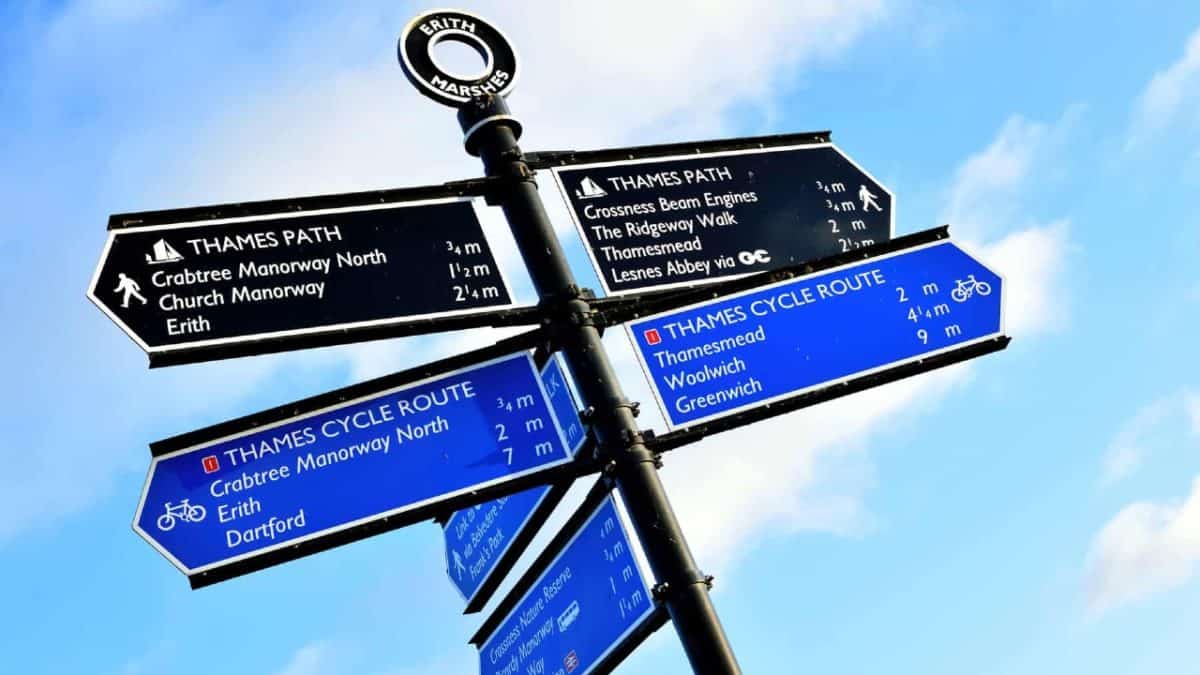
There is no right way or wrong way to tackle this National Trail, and because the elevation profile is low, the prevailing wind direction isn’t too much of an issue. That said, if you want to keep the wind at your back (and, in turn, avoid the brunt of any bad weather), you’re best to walk from west to east. Walking from west to east also allows you to experience the growth of the Thames, which is quite a beautiful experience.
It also allows you to view the effect of river water upon communities – as the river grows larger, so too do the towns upon its banks. This direction ends in London, which can be a fantastically cosmopolitan finale – and offers all the big-city luxuries and treats you could desire after many days of walking. If you prefer to end your walk with rurality and peace rather than in the heart of bustling London, the walk from east to west can be just as rewarding.
Where does the Thames Path Take Me?
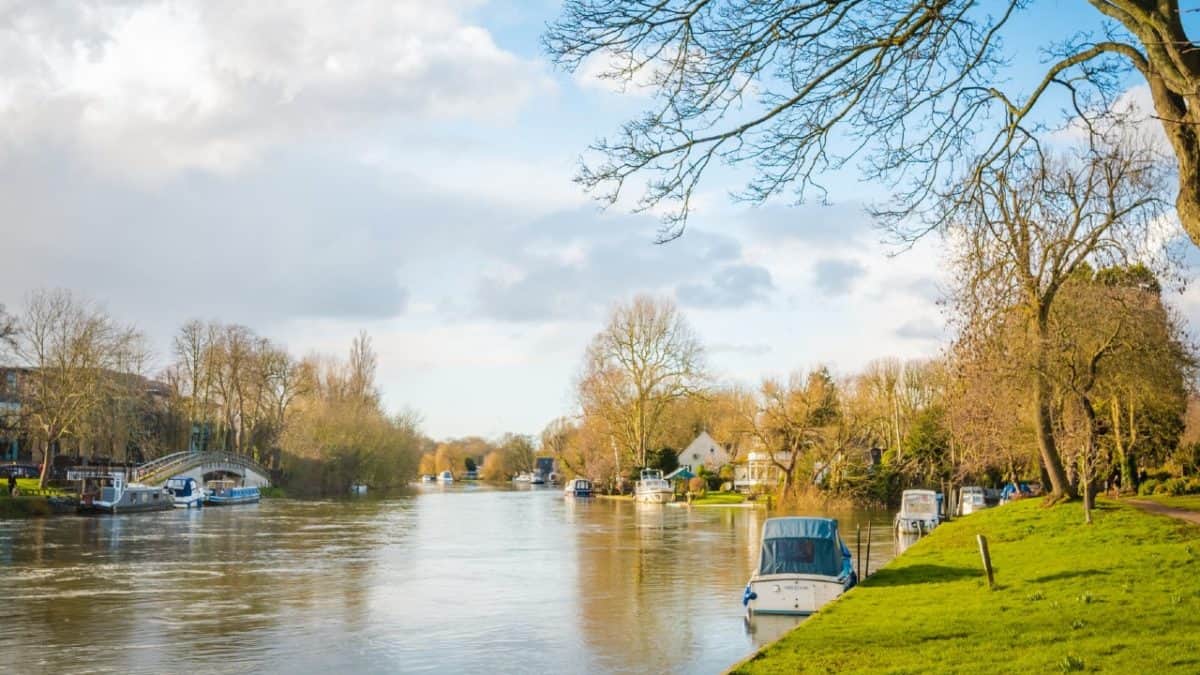
Assuming you walk west to east, here’s what you’ll experience. From its humble beginnings near Kemble to a human-built barrier defence against flooding, you’ll see the rise, growth, and swell of the iconic Thames. The riverside views are beautiful, full of flowing water, floating boats, and picnicking families. And for many, that’s the highlight.
But take the river away, and the route would still be beautiful. The path passes through and along flora, fauna and farmland and brings walkers into close contact with iconic parts of England’s rich history, with buildings, towns and cities of huge heritage. You’ll also trundle past majestic family homes of palatial proportions. Ranging from silent meadows all the way through to one of the busiest cities on the planet, you won’t find much more variety than this.
Why Walk The Thames Path?
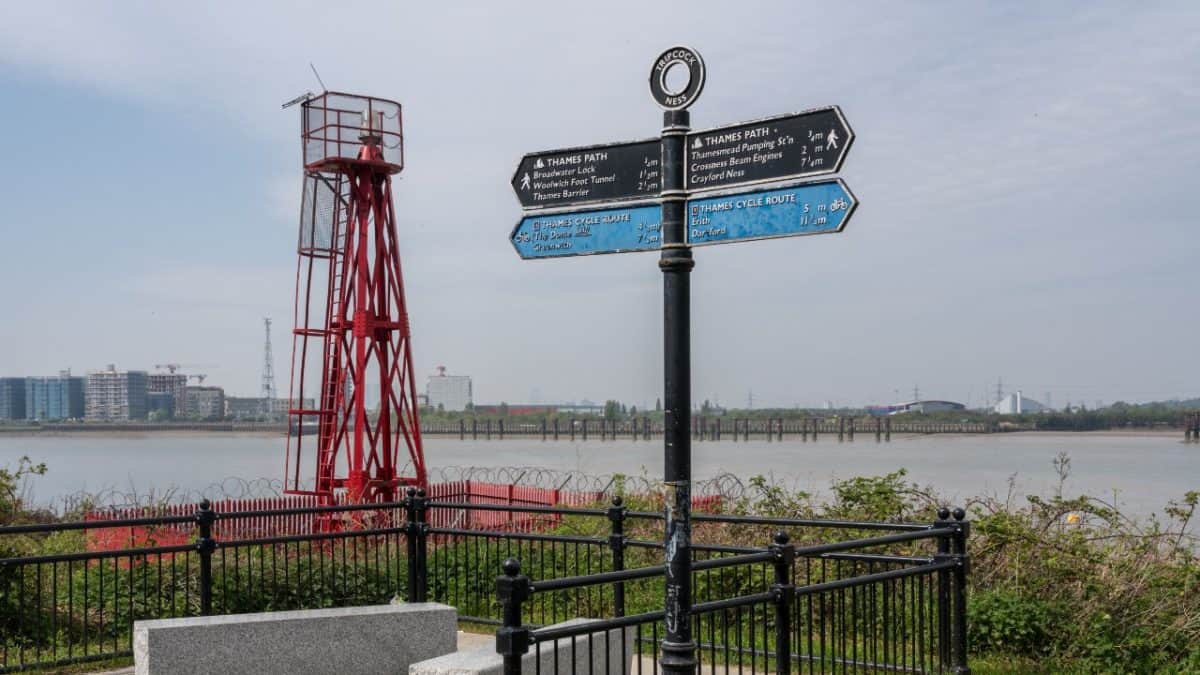
There are quite a few motivations, and here are a few:
- Views. Although it’s largely a flat walk, there are still plenty of beautiful views. The Thames Path won’t give you the dramatic panoramas that other National Trails can offer, but the meadows, banks and townscapes are more than enough to make you fall in love with the aesthetics of the Thames Path.
- For the challenge. The Thames Path is one of the best long distance walks in England. All long-distance walks are a challenge. Make no mistake – though this walk is largely flat, this trek is a huge accomplishment for anyone brave enough to take on the whole thing. 296km is never going to be easy, regardless of the terrain.
- Hiking is like a double win for your well-being. It is not only great for your body but also gives your mind that much-needed zen vibe. So, lace up those boots and hit the trails for a dose of good health and happy thoughts.
- Joining the hiking tribe is like finding your long-lost outdoor family, full of fellow ramblers and trekkers who share your love for the trail. And hey, if you’re a Londoner used to the bustling city life, bumping into kindred spirits along the way will feel like a breath of fresh forest air. Many people complain that London doesn’t have a community of walkers. If you undertake the Thames Path, you’ll see why those complaints are misplaced.
- Ah, English weather, where the forecast is more unpredictable than a plot twist in a telenovela! While you can’t count on endless sunshine, it’s all part of the island’s quirky charm, right? However, this walk offers good terrain for the most part, so you’ll get by unmuddied and unstained (unless there’s flooding, but more on that later). And southern weather is usually more pleasant than the climate up north.
- For a front-row seat to some of the world’s most iconic landmarks and vistas, you’ve got to hit the trail. It’s like a “best of” reel of Mother Nature and history, all rolled into one epic journey. There are plenty.
Sights Along the Route
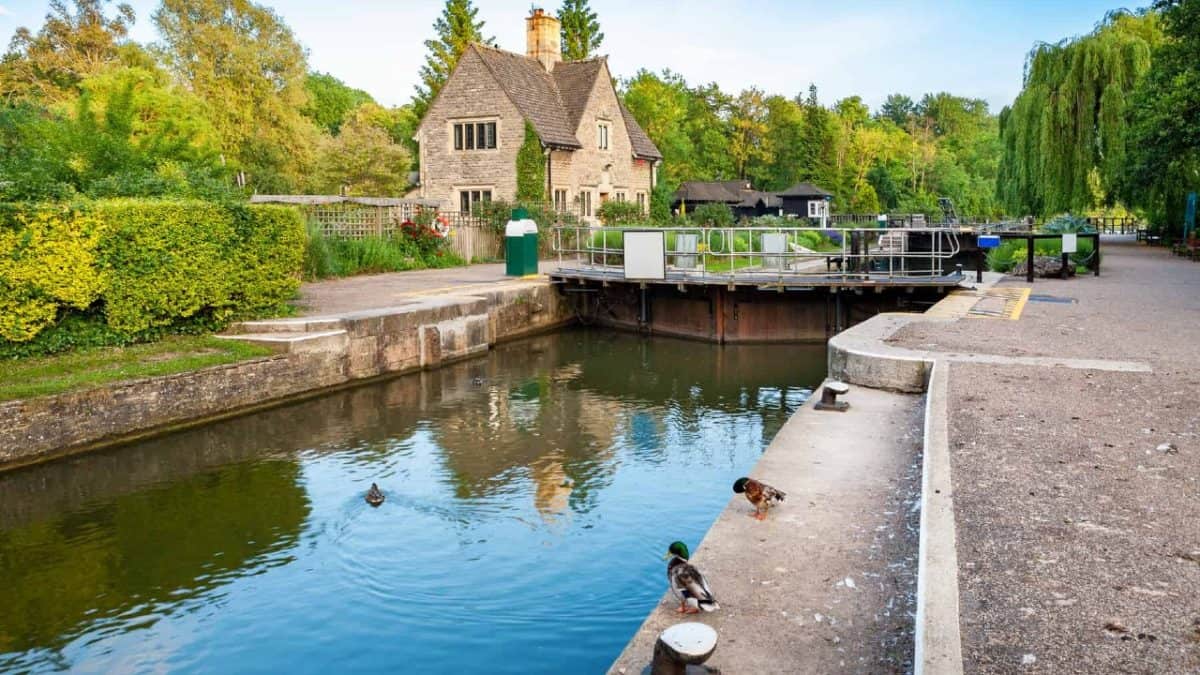
If you walk the whole stretch, there are a huge amount of highlights. You can, of course, tackle the Thames Path route chunks at a time. Here are some of my favourites:
- Source to Oxford: By far the most remote stretch of the walk, this is the section that serenity lovers will enjoy the most. Apart from a few towns and villages dotted here and there, this section has wildflowers, farm animals, and peace and quiet, which will make the endpoint of London seem unthinkable. In summer, the beginning of this section may show little signs of the river’s source, but the Thames will soon emerge. Old churches, stone bridges, and other ancient architecture make this a beautifully placid journey into England’s history. Just over a quarter of the Thames Path walk, this stretch is beautifully serene.
- Oxford: an iconic and beautiful city, this marks the first time you really emerge from peace and quiet. You’d be remiss not to spend some time here. One of the oldest and most celebrated university towns in Europe, it’s replete with beautiful architecture. Pubs, cathedrals, castles, colleges, and museums, Oxford has the lot.
- The Goring Gap: sandwiched right between two official Areas of Outstanding Natural Beauty (The Chilterns and The North Wessex Downs), this is the narrowest part of the entire Thames Valley. Set in a beautiful location, it’s leafy, impressive, and historic, allegedly the inspiration for Wind in the Willows! If you’re on a long break and want to take some detours, this is the place to do it – both The Chilterns and The North Wessex Downs are beautiful areas.
- Windsor Castle: the iconic royal residence rises majestically above the water, the grandest of all the grand homes along the banks of the Thames. Whether you step inside or not, clapping eyes upon the castle is a real highlight for anyone who takes on this walk. Just beyond Windsor Castle is Runnymede, another site of huge historical importance – it was here that the Magna Carta was signed.
- Shepperton to Teddington: varied and full of historical significance, this section includes Hampton Court Palace, endless reservoirs, an old racecourse and the important town of Kingston.
- London and the approach towards it: the London chunk of the walk takes in a huge amount of the city’s best sites. Richmond Deer Park, Kew’s Botanic Gardens, Tower Bridge, the Tower of London, the Houses of Parliament, and much, much more. In this section, you can walk on either the south bank or the north bank of the river – the two routes vary slightly in length, and of course, vary in views and vistas.
If you are interested in other routes near London, check out the best hikes near London.
How Long Will The Thames Path Walk Take?
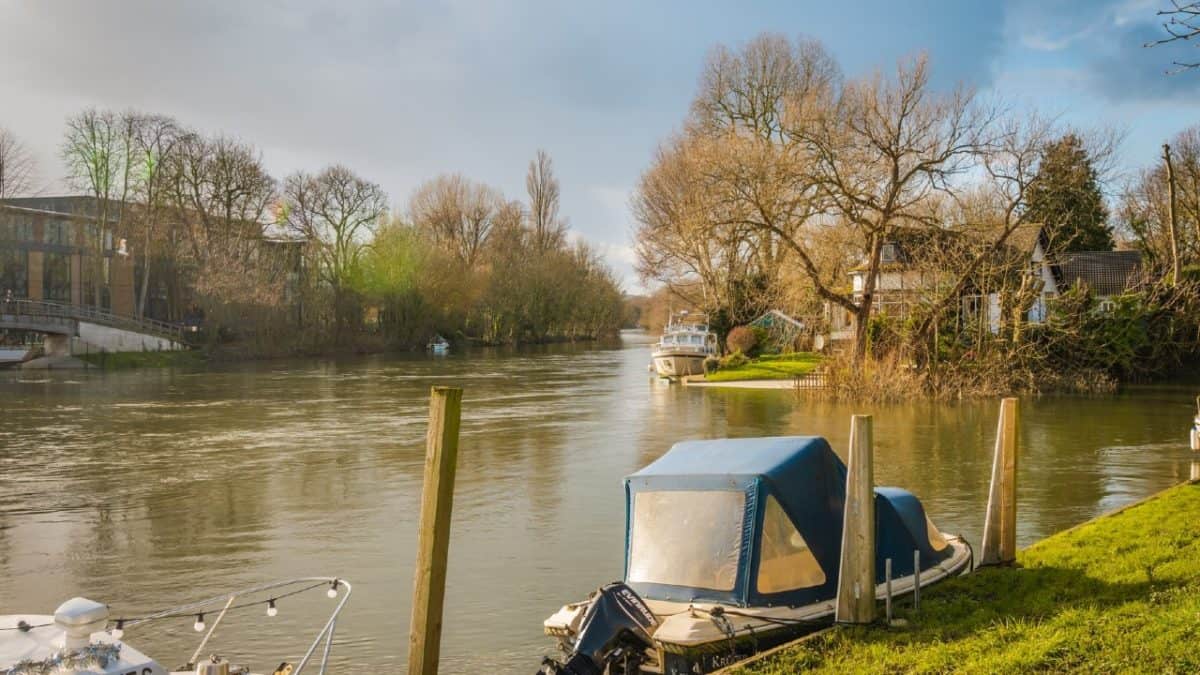
If you choose to take on the entire challenge, you should plan to do so in around 14 days. Some go for closer to 10, while others extend it to around 18. Go for whatever feels comfortable to you.
If you like a leisurely pace, and you’re more interested in taking in the sights, give yourself more time. Likewise, if you’re motivated by the prospect of a physical challenge, you can go at a quicker pace. The record for running the trail sits at 40 hours and 47 minutes, set in 2015.
Am I Fit Enough?
You should make sure you’re fit enough to take on the walk before you set off. Yes, your cardio might be good enough (and since this walk is flat, it probably will be). But your joints might not quite be up to the challenge. Often, a long walk can throw up previously unnoticed problems, especially in the knees, ankles, and hips. Practice a couple of weekend walks to ensure that this won’t be the case. Here are some walks near London.
And when you do take on the walk, make sure you carry hiking poles – they take a massive amount of pressure off your joints. For the paved sections of this walk, you’re best off wearing lightweight shoes. On hard ground, shoes with overly sturdy soles can hit your joints with unnecessary impact.
When Is The Best Time To Walk The Thames Path?
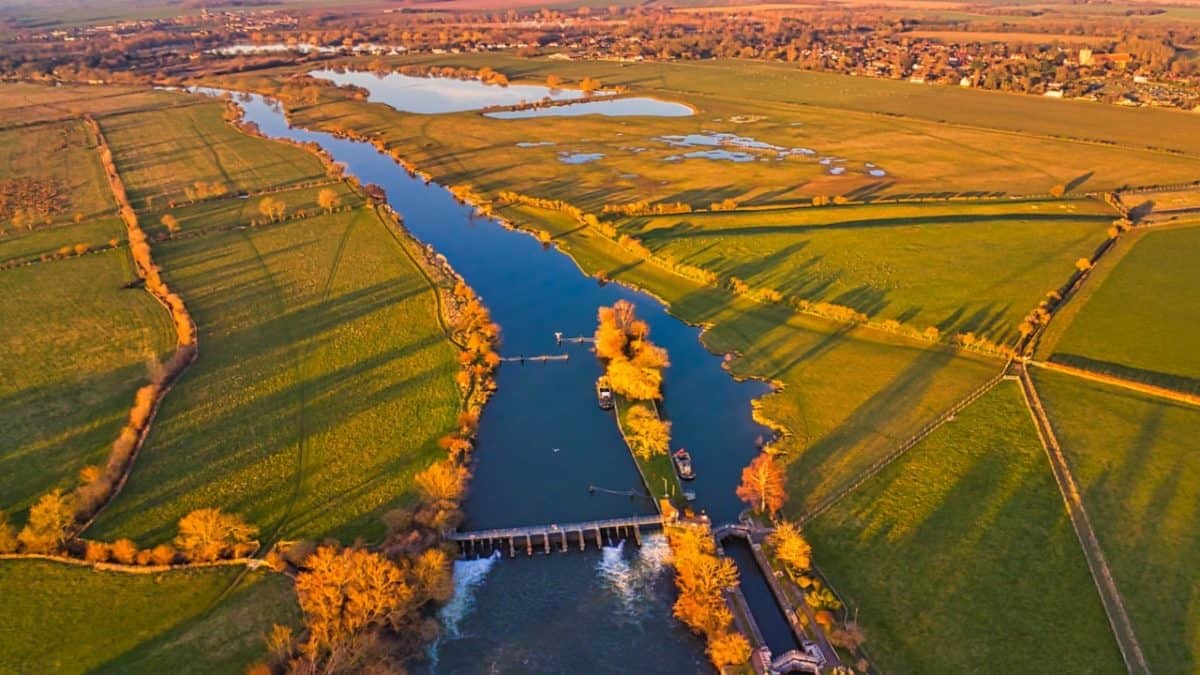
Generally speaking, May to October is the best time to do the walk. That’s because of potential flooding. In the stretch leading to Oxford (if you’re walking in an easterly direction), the ground has the potential to be unpassable if there’s been any flooding.
Even if the flooding was a while ago, the ground can be muddy, boggy, and unpleasant. If there’s not been much rain, you can walk this trail at any time of year, but winter and spring months offer little in the way of no-rain guarantees. The stretches beyond Oxford are typically passable at any time. Much of the section beyond Oxford is paved, making your walk very easy.
Consider the weather a little before you embark. Do you prefer to walk in hot weather or cold? Do you like the glaring sun or shorter days? Crowds are another important consideration. On the more popular stretches, summer, spring, and autumn weekends can be very busy. And even more so on school holidays. If you’re keen to avoid crowds, plan accordingly.
Is The Thames Path Trail Well-Marked?
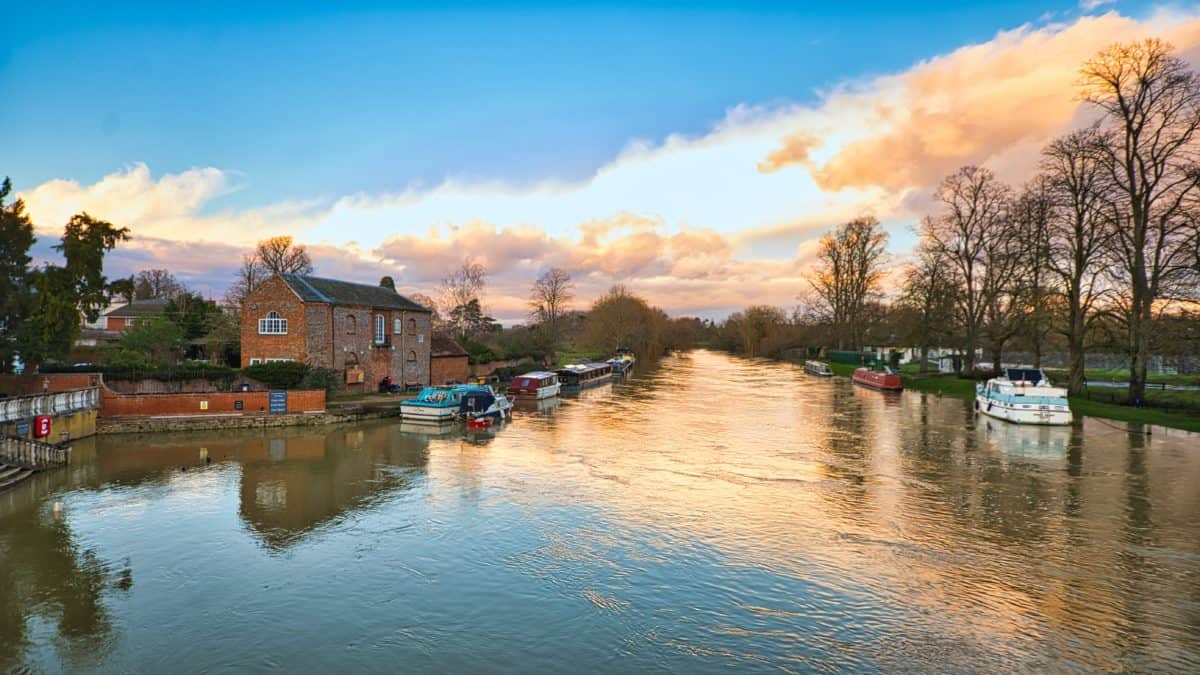
If you’ve ever followed a trail, you’ll have absolutely no problems here, as the route is very well marked. You will be okay as the trail follows the course of the River Thames for its vast majority. It’s not hard to see where you should be going.
Navigating the trail is a breeze, thanks to its excellent upkeep. You won’t even need markings to spot the well-trodden paths. Keep an eye out for the cute acorn symbols. They’re your signposts for National Trail routes. And those colourful arrows? Consider them your personal trail guides, pointing you in the right direction as follows:
- Yellow is only for walkers
- When on Blue, watch out for horse riders and cyclists
- Beware when on Plum, as well as all the above, there are also carriage drivers
- And Red is for everyone, including cars
For this walk, there’s no need for a compass. You might want to carry a map or a guidebook to spot the sights along the way, but there’s no real need for any tools when it comes to navigation.
Packing for The Thames Path
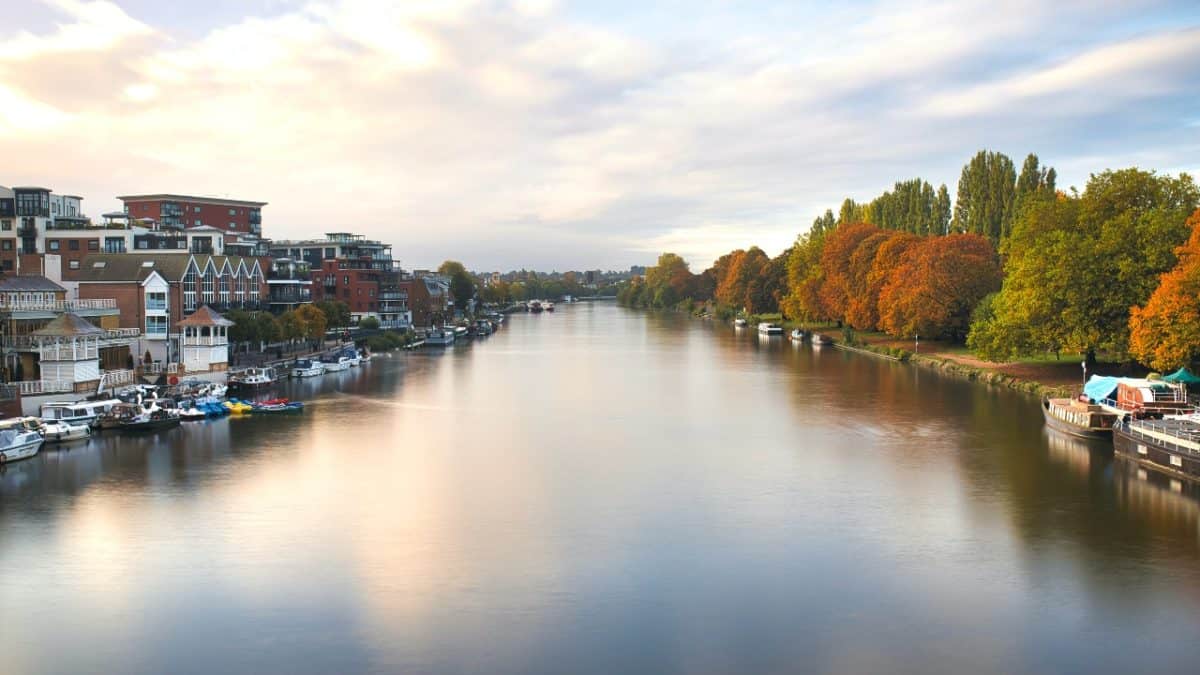
The amount of equipment you’ll need to carry will depend on where you plan to stay each night – more for camping, a bit less for hostels, and less again for hotels and B&Bs.
- Clothes. Ah, the packing conundrum, how to travel light without sacrificing essentials. Here’s a pro tip: go all-in on Merino Wool gear. Not only is it super comfy, but it also needs less washing. Yep, even your undies and socks can be low-maintenance. Toss in some waterproofs for good measure, and you’re golden. Oh, and don’t even think about leaving without a hat. If you’re on the hunt for the perfect trail trousers, check out my roundup of the best hiking pants.
- Make sure you have decent shoes. Trust me, you don’t want to break in new shoes on the trail. Make sure you’ve got well-worn, trusty shoes that have already been on a few dates with your feet. I have written a couple of round-ups of the best hiking shoes and best shoes for women.
- Water bottles and purification tablets are your hydration dream team on the trail. Grab a couple of sturdy, refillable bottles and toss in some purification tablets just in case you can’t find that crystal-clear stream. Better safe than thirsty, right?
- First aid kit: Don’t hit the trail without one! Even if it’s just for a bandage or a quick aspirin, make sure it’s stocked with essentials like rehydration sachets and sunscreen. Safety first, adventure second.
- Hiking poles are great on long trails.
- Camping gear (optional): If you’re all about that tent life, ensure your gear is lightweight and top-notch. Cooking? Bring compact kitchen essentials. Just know this trail isn’t a camper’s paradise. Some stretches are more B&B than backcountry. Plan accordingly.
- Food: Whether you’re camping or not, snacks are a must! Opt for lightweight, high-calorie munchies to keep you fueled without weighing you down.
Thames Path Accommodation
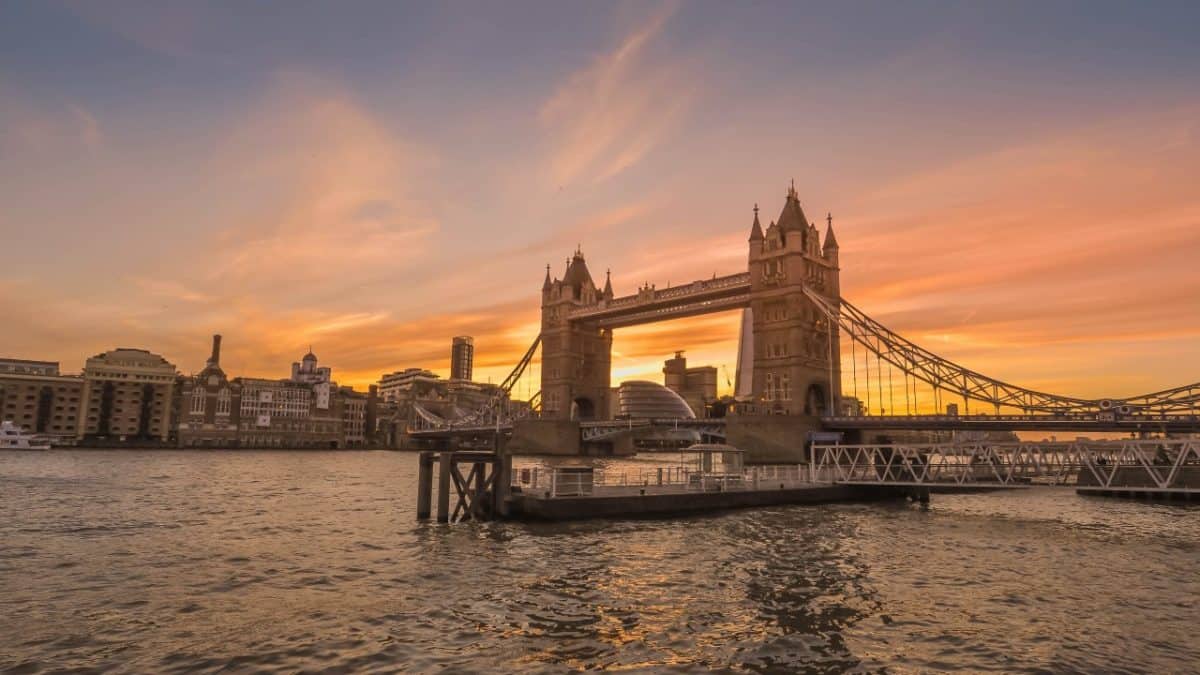
On the Thames Path, the vast majority of hikers sleep in indoor accommodation en route. Accommodation options include hotels, guesthouses, hostels, bed and breakfasts. Because this walk is a long one, we can’t cover all the options en route, but here are a few choice highlights:
- The Trout Inn at Tadpole Bridge, Buckland Marsh (https://www.trout-inn.co.uk/). Log fires, warm welcomes, and rustic interiors, this is a fantastic pub for an overnighter. They specialise in boat hire and local sausages!
- YHA Oxford (https://www.yha.org.uk/hostel/yha-oxford). An affordable option in a city of expensive accommodation, YHA Oxford is located close to the trail and close to most of Oxford’s big attractions. Many walkers stay here, and you will meet other hikers walking the path.
- Longridge Activity Centre, Marlow. Something a little bit different, this activity centre reaches out to kids and adults who like to adventure, offering activities such as kayaking, abseiling, and climbing. If you have kids in tow on your walk, this is an excellent option. A good choice for those walking on a budget.
- Riverbank House, Cookham (http://www.riverbankcookham.co.uk/). An alternative to the above if you’re not too keen on more physical exertion, this is a proper bed and breakfast inside a Grade II listed building. Great panoramas, friendly faces, and excellent food. A fantastic choice.
- Dee and Steve’s B&B, Windsor (http://www.deeandsteve.com/). A relatively affordable option in the heart of pricey Windsor and very close to the trail, this is a great bed and breakfast. A great location, fantastic hospitality, and is very affordable. This is a great middle ground option, suitable both for budget backpackers and those who usually crave a little more luxury.
- London: London runs the gamut when it comes to accommodation options. Hostels, bed and breakfasts, hotels, Airbnbs, and plenty more. If you’re keen on a cheap stay in London, the YHA has plenty of properties. But those seeking luxury can find plenty of decadence.
Related Hikes:
Are There Places To Eat And Drink Along The Thames Path?
Yes. You’ll rarely struggle to find anywhere to eat and drink. You’ll never walk more than 15km without finding a spot with a tasty meal – or at least an opportunity to stock up on snacks. As you move eastwards, these eating opportunities become more ever-present. This is one of the great draws of this walk. Because it’s not too remote, you won’t have to worry too much about when and where to eat.
Other National Trails can be a little more complex in this regard. That said, you should stock up on some snacks before you leave, because endless walking is bound to leave you hungry.
There are loads of good pubs and restaurants along the way, which are a fantastic way to get close to the cuisine of this part of the world. Country pubs are always a fantastic staple of British hiking, and this walk brings you into close contact with many of them. Make sure you pop in to some good pubs for some good beer! As for restaurants, you have plenty of options.
Because you meander through countless areas of cosmopolitan diversity, the range of food on offer is fantastic – the eastern side of the walk is a great way to sample the diverse cuisine of southern England. The Thames Path is an excellent challenge for walkers of any description.
Its hefty distance offers a challenge to even the hardiest of walkers, while the elevation profile and friendly ground will appeal to casual hikers. For this reason, it’s a great choice if you want to walk with friends, family, kids, elderly relatives, or anyone else who doesn’t want a trail too intense. It’s also a very diverse walk, offering huge contrasts between bustling cities and quiet meadows.
The route itself might also appeal to some. Because you’re following a complete river, from source to climax, you feel as if you’re taking a journey of natural significance. An archetypal British walk, full of so many things which make Britain great, this is an excellent National Trail. Lace up your shoes and get on your way.
Can You Cycle The Thames Path
Yes, you can cycle the Thames Path. Spanning over 180 miles, the scenic trail follows the iconic River Thames from its source in the Cotswolds to the Thames Barrier in London. Suitable for cyclists of all levels, it provides a fantastic opportunity to explore England’s stunning landscape and historic landmarks along the way.

I love hiking, backpacking, and camping. From the Camino de Santiago to the West Highland Way in Scotland or simply a great day hike on the weekend. Hiking refreshes me, my mind, and keeps my body reasonably fit. So far I have walked three Camino routes and many other long distance hikes in the UK, Canada, and around the rest of Europe. One of the best was my hike up Ben Nevis.

